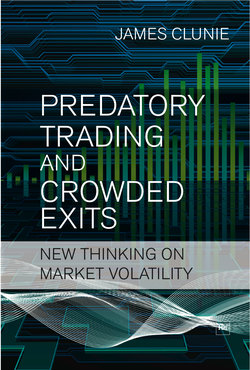Читать книгу Predatory Trading and Crowded Exits - James Clunie - Страница 14
Tidal waves and market bubbles
ОглавлениеSuch tidal waves of noise trading emerge much as fads and fashions do. Where market participants obtain information and opinions from the same source, or share opinions with one another on websites or other media, noise traders can begin to believe in a common story, to imitate one another’s trading and to herd in their behaviour. As momentum builds, a fashion can develop into a bubble.
One of the most famous purported market bubbles from recent years involved the rapid ascent in technology, media and telecom (TMT) stocks from around 1998 through to March 2000 and their subsequent sharp decline (March 2000 – March 2003). Brunnermeier and Nagel investigated the activities of hedge funds around the time of this ascent and collapse in TMT stock prices. Their article was published in 2004, by which time the NASDAQ index had fallen over 75% from its peak of March 2000 and just about everyone grounded in realism agreed that the TMT stock phenomenon of the late 1990s had been a bubble.
One might expect that hedge funds were trying to short-sell egregiously over-valued TMT stocks in 1999 and early 2000, but the authors found that hedge funds were in aggregate over-weighted in technology stocks in 1999 and early 2000.
Why might this have been?
These hedge fund positions cannot be explained by barriers to short-selling: if short-selling was too difficult or too costly, a fund would simply hold a zero position in the security, or at the very least some under-weighted position relative to the benchmark weight of the security. Funds would certainly not have held over-weighted positions if they believed that the shares were about to fall in price. This notion is reinforced by a separate study by Geczy et al. (2002) that found that short exposure to dotcom stocks was neither costly nor difficult during this period.
In light of this evidence, Brunnermeier and Nagel concluded that hedge funds were ‘riding the technology bubble’, rather than short-selling apparently over-valued stocks. In a market with many optimistic noise traders, it might not pay to immediately short-sell over-valued stocks. Informed traders almost certainly knew that TMT stocks were over-valued, but feared the army of optimistic ‘new paradigm’ noise traders enough to stay well away from shorting TMT stocks…for years on end!
